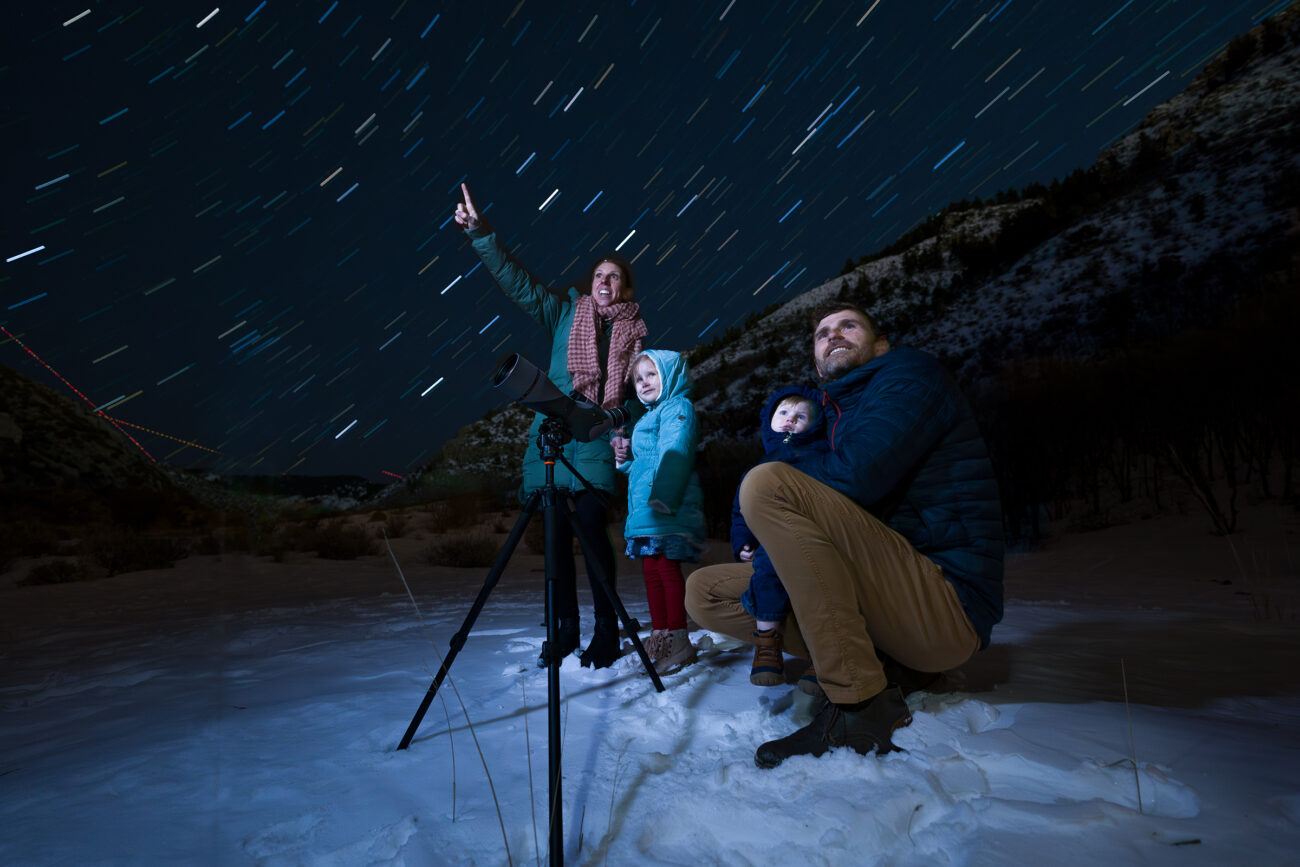Practice Makes Maybe
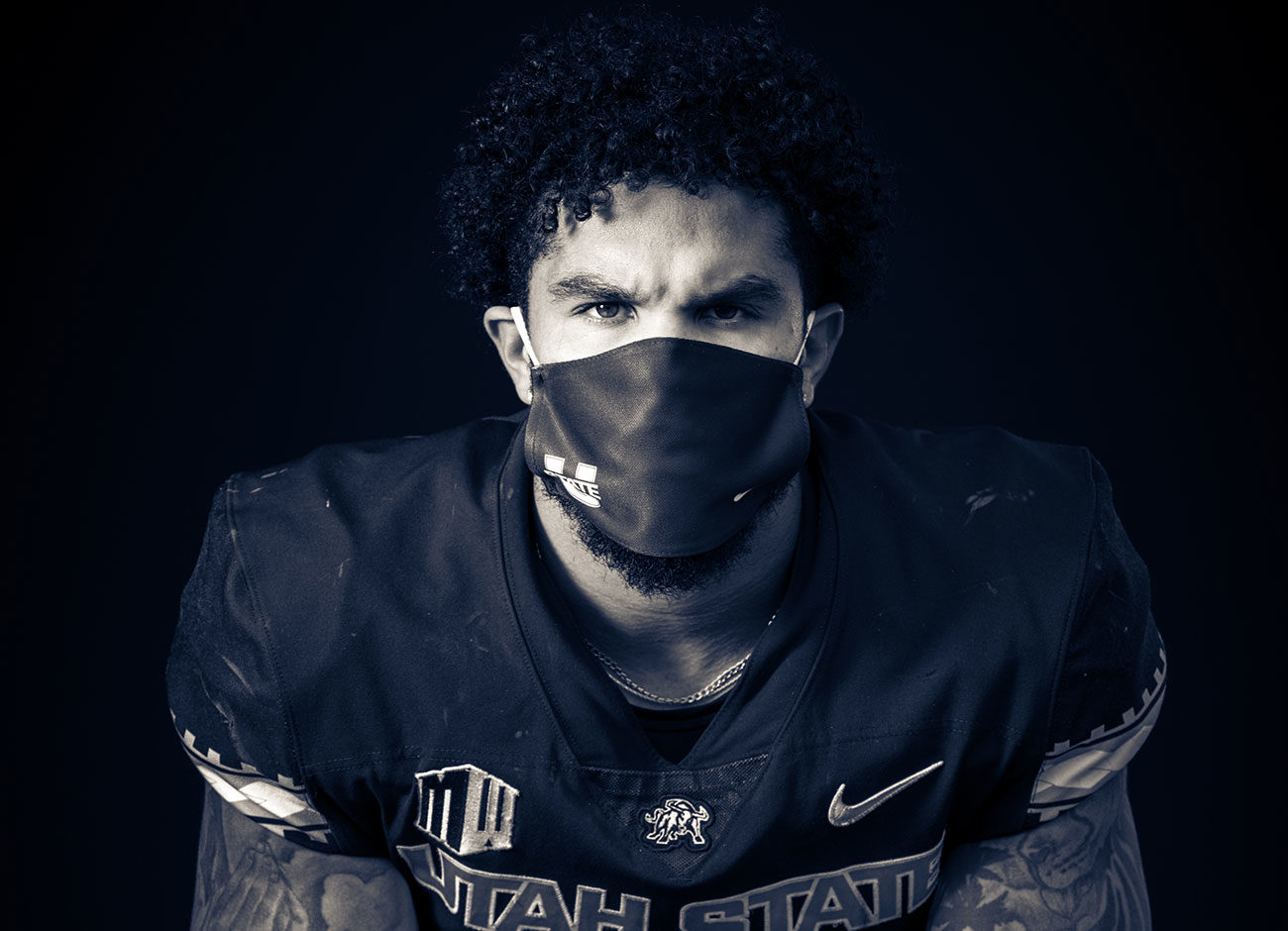
On the rebound, in the whirlwind, gearing up for change. The lives of Aggies interrupted and adapting during the athletic pandemic.
Justin Bean was ready for the rebound. As the shot went up, the Aggie forward threw a “swim” move on his San Diego State opponent, deftly moving from the right side of the lane to the left, putting himself in perfect position to snag the carom and put the ball back in the basket for a Utah State win. But one of the most prolific USU rebounders in recent memory never got the chance to touch the basketball. Instead, he simply enjoyed having a front-row seat to one of the biggest plays in the long history of Utah State basketball.
“I had a tip-in earlier in the year that helped us beat South Florida, so I briefly thought maybe it would be another moment like that,” Bean recalls. “But Sam Merrill is obviously Sam Merrill, and he sank it.
“And seeing that shot going in was definitely one of the craziest moments of my life.”
Of course, it was the 3-point dagger by senior guard Sam Merrill with less than three seconds left that broke a tie and staked the Aggies to a 59–56 lead in the Mountain West championship game in Las Vegas, and ultimately, a second straight tourney title on March 7.
“We felt like everything was coming together, and we were playing our best basketball at the right time—the perfect time.” – Justin Bean
“The basketball gods were on our side,” Bean says. “There were just a lot of emotions to deal with in that last 10 seconds or so.”
But thanks to Merrill, who leaves USU as the second-leading scorer in the school’s history, and a gutsy performance by the rest of the team, the Aggies overcame a 16-point, first-half deficit to win the tournament and an automatic bid to the 2020 NCAA Tournament.
“I think our spirits were the highest they had been in two years,” Bean says. “We felt like everything was coming together, and we were playing our best basketball at the right time—the perfect time—and we were looking to ride those emotions and that momentum into the NCAA Tournament.”
And then the world unraveled.
Four days after watching their son help the Aggies win the Mountain West championship in Las Vegas, Gordon and Shauna Bean were settling into their seats at Chesapeake Energy Arena in Oklahoma City. The Beans are season-ticket holders to Thunder games, but on this night, something was off. There was a lengthy delay and members of the Thunder and the visiting Utah Jazz left the court and returned to their locker rooms.
In a group text, Bean’s parents shared that the refs were talking to each other and members of the medical staff, Bean recalls. “Fans started booing when they announced they were canceling the game. But they left the arena and got in the car still not knowing what was going on.
“But soon we started seeing things on Twitter about coronavirus being the reason, and that some Jazz players might be involved. … “That’s when I realized, this might not end well for us,” Bean adds.
The commotion that Bean’s family witnessed was the reaction to Jazz center Rudy Gobert testing positive for COVID-19, which led to the NBA shutting down play, just hours after the NCAA had announced “The Big Dance” would go on—just without fans in the stands.
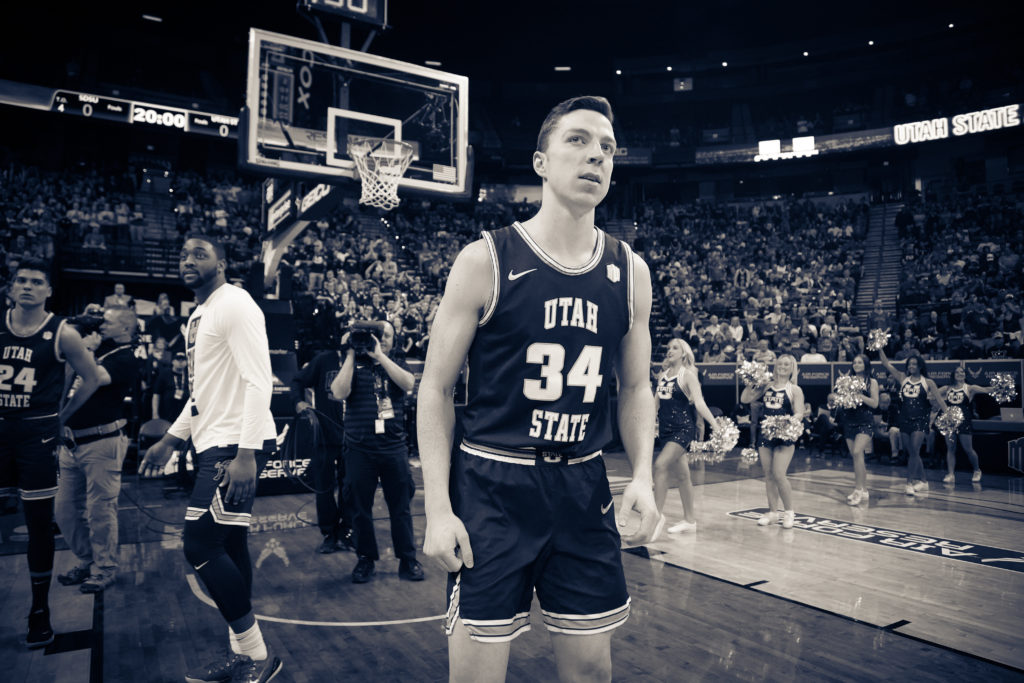
Justin Bean was a sophomore forward on last year’s basketball team, which won the Mountain West tournament championship, but was then denied its automatic berth in the NCAA Tournament due to the impact of COVID-19. Photo from USU Athletic Media Relations.
By the following day, the NCAA Tournament had been canceled, and Coach Craig Smith had been officially informed his team had an automatic bid to a tournament that would never take place.
“I’ll never forget that meeting out on the court at the Spectrum,” Smith says. “Sam Merrill is someone who you just don’t see a lot of emotion out of, but he was in the middle, with tears just flowing down his face. And you can go right on down the line.
“Everyone just started hugging each other, and it was incredibly emotional. I soon realized that (senior guard) Diogo (Brito) wasn’t there, and someone said he just ran up the tunnel as soon as I told them. I called him on the way home, and he said, ‘Coach, I’m sorry. But I’m just not ready for it to be over.’”
Three months after the final practice of a 26–8 season, Smith insists, “I’m good. It was certainly difficult for about 10 days, and it felt like ‘The Twilight Zone’ a little bit.” Smith says he and his program understand “the big picture” about why the NCAA Tournament was canceled, and looking back now, simply feels grateful that the Mountain West tournament was moved up a week.
Otherwise, there would have been no second straight tourney championship in Smith’s two seasons at USU. And there would have been no moment like the one Merrill delivered.
“There are so many things to be grateful for,” he notes. “But at the same time, we really felt like we could make some noise this year. You never know, we could have been the next Loyola of Chicago.”
Since all of the madness of March, Smith and his staff have kept in touch with their players via phone and Zoom gatherings, conducted virtual recruiting, and adjusted to changing NCAA mandates. Smith is anxious to “get a feel” for his new team, something that a computer screen simply can’t provide. “As a coaching staff, and just as a person right now, you have to learn how to adjust on the fly,” Smith says.
“Whatever our direction or our policy is today, it may change in the afternoon from what it was in the morning based on new information. We’ve got to be flexible in how to navigate it, and make sure we communicate across all lines.” – John Hartwell
“You have to be flexible and try not to make a big deal out of little things because just in the last couple of weeks, the amount of things that have changed is just insane. You have to try and make the best of things, even though we still don’t know if they’ll be a football season or a basketball season. If we’ll have a half season, and no fans. Nobody knows right now.”
Like most people, this is John Hartwell’s first pandemic.
“It’s definitely been a whirlwind,” the Utah State athletic director says. “And there’s no AD 101 textbook to look at while you try and deal with something like this.”
And if there was, that textbook would have to be reprinted several times a week, if not daily. Ever since Gobert’s diagnosis, practically every college athletic department adjusted to recommendations, guidelines, and rule changes from numerous entities and agencies.
“It’s an evolving situation,” Hartwell says. “Whatever our direction or our policy is today, it may change in the afternoon from what it was in the morning based on new information. We’ve got to be flexible in how to navigate it, and make sure we communicate across all lines.”
In June, Utah Gov. Gary Herbert announced that guidelines for large gatherings in the state, including up to 3,000 people for indoor events and 6,000 for outdoor events with social distancing
and mask precautions. That led to Hartwell and his staff looking at different seating scenarios to accommodate fans at 25,513-seat Maverik Stadium for for what was supposed to be USU’s season
opening game against Washington State on Sept. 3. In a pandemic-free world, that contest would likely be a sellout.
The added challenge is that premium seating such as suites and club seats on the west side of the stadium is what “helps pay the bills,” as does the student section on the lower east side thanks to the more than $5 million the athletic department gets annually from student fees.
“We’ve been looking at several different ways to accommodate as many fans as possible in there because we want to maximize revenues,” Hartwell says. “It’s just a tightrope that we’re trying to walk.”
Athletic departments around the country have lost millions of dollars in revenue. Many schools have eliminated entire athletic programs to save money, including Southern Utah University discontinuing its men’s and women’s tennis programs, Stanford dropping 11 sports, and Boise State cutting swimming, diving, and baseball—a program it just restored in January after a 40-year hiatus.
Hartwell says he’s optimistic that Utah State will be able to avoid such drastic measures.
“Once it became clear that things were going to be shut down for a while, I got everyone together and said, ‘It is going to be our philosophy going forward that we’re going to protect our sports, we’re going to protect our scholarships, and we’re going to protect our jobs.
“I’m not saying that completely overcomes the loss of not being able to compete in the spring, but our kids definitely took lemons and made lemonade out of it.” – John Hartwell
Beyond that, I need everyone to be on board with use limiting expenditures to only things that are essential,’ and everybody’s done a great job of that,” he explains.
For fiscal year 2020, Hartwell says the Aggie athletic department fared alright because the Mountain West was able to capitalize on the revenue that came from the basketball tournament, while most other conferences were not.
He said the silver lining to spring sports getting shut down was that they spent much less money on travel and in-person recruiting. USU’s student-athletes rallied to a combined overall GPA of 3.51 for spring semester, breaking the previous semester mark of 3.32 from the fall of 2019.
“That was really unbelievable for kids who may have never really done online work before,” Hartwell says. “I’m not saying that completely overcomes the loss of not being able to compete in the spring, but our kids definitely took lemons and made lemonade out of it.”
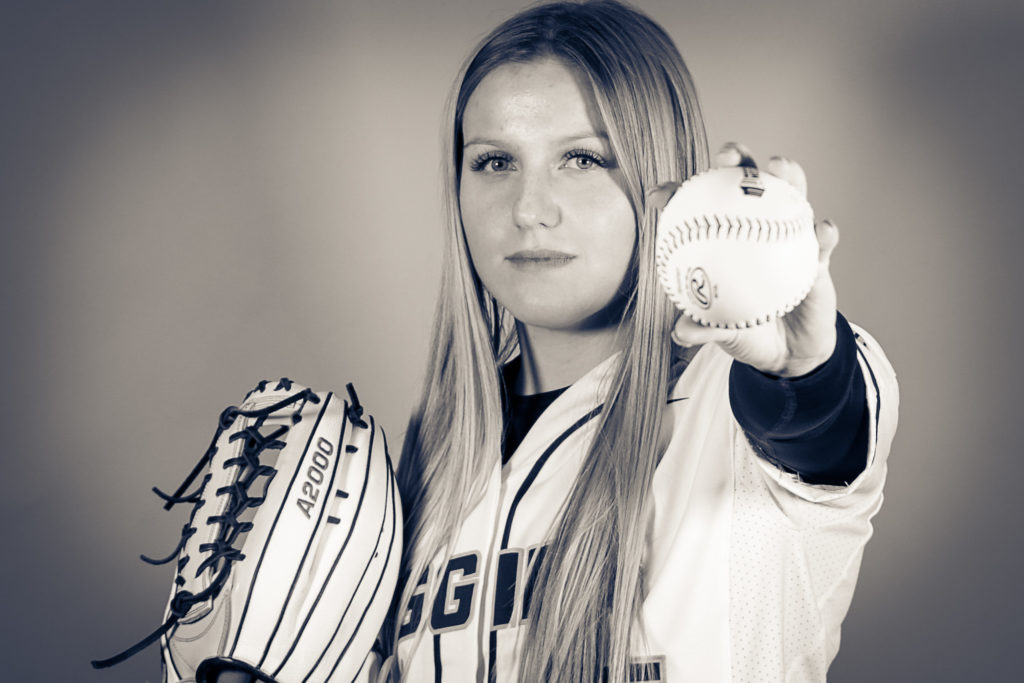
Freshman outfielder Mazie Macfarlane was second on the USU softball team with a .329 batting average when the season abruptly ended after 24 games. Photo by Rick Parker.
Utah State did take a financial hit “to the tune of south of a million dollars,” due to the NCAA Tournament being canceled, but Hartwell says the athletic department will have a balanced budget for fiscal year 2020. However, going forward into fiscal year 2021 beginning July 1, things were certainly bleaker. Hartwell anticipated an operating budget of $38.5 million, but has since trimmed off about $3 million, with much of that savings coming from fewer recruiting trips and scheduling fewer games, especially road contests. A new Mountain West television package helped provide a $2 million increase, he says, otherwise he would have had to cut as much as $5 million off the 2021 budget, “which would have been really, really tough for us to do.”
It also helps that projections for fall enrollment at USU are only down about 2-3 percent of normal, which means the impact of lost money from student fees should be rather minimal.
“I have to give a lot of credit to [Vice President for Business and Finance] Dave Cowley and his vision and just being financially prudent with how we build new facilities and do capital projects,” Hartwell notes.
Of course, what’s difficult to gauge is how the pandemic and its corresponding impact on the economy is going to limit philanthropic giving, not to mention the worst-case scenario of COVID-19 shutting down the entire 2020 football season. No collegiate sport brings in nearly as much revenue as football, which could lead to a massive ripple effect through all other programs.
That’s why there were discussions of playing games without fans, playing only conference games, and even a proposal by the Ivy League that the 2020 football season be played in the spring of 2021. By mid-July, many of those potential measures were becoming reality, with the Ivy League moving fall sports to the spring, the Patriot League canceling its fall sports, and the Big 10 and Pac-12 announcing that they would play only conference games in football—a move that cost the Aggies not only their home game against Washington State, but also a money-making trip to Seattle to play Washington on Sept. 19. But in June, Hartwell was optimistic that sports will go forward this fall, using testing guidelines recommended by the university, the state of Utah, the Mountain West Conference, and the Bear River Health Department.
“We were a mess. Everyone was a mess. It was a sad scene, especially for the seniors.” – Mazie MacFarlane
“Over the course of the next two and- a-half months, we’re going to hone in our protocols and do everything we can to keep student-athletes, staffs, and fans safe,” he says. “The ultimate decision maker will always be their safety and welfare.”
For many college athletes, they spend years practicing and sacrificing their social lives so they can be ready to take the stage when it counts. But what happens when the moment comes during a pandemic? Up until the second week of March, Mazie MacFarlane was absolutely living the dream.
A left fielder on the Utah State softball team, Macfarlane was hardly playing like a freshman, hitting in the No. 3 spot in a solid Aggie lineup thanks to a .329 batting average. In just 24 games, she had belted four doubles, two home runs, scored 15 runs and driven in 11, including five in a 12–5 road victory over Santa Clara on March 7.
Macfarlane, who bats left and throws left, was also playing alongside her “mirror image”—twin sister, Makenzie, a catcher/first baseman who is righthanded in the field and at the plate. The Macfarlane twins of Rocklin, California, were eager to finally play at home after playing all the earlier games out of state.
Utah State had a road contest at Utah Valley slated for Friday, March 13, followed by its first home game, also against the Wolverines, on March 15. Macfarlane says until that point, she “really wasn’t worried” about COVID-19’s potential impact on her first season of collegiate softball.
“It wasn’t until the Pac-12 canceled their season that I thought, ‘Oh dang, the Mountain West might do that, too,’” Macfarlane admits. “We were supposed to play on Friday, and Coach [Steve] Johnson held a team meeting on Thursday. That’s when we found out.
“We were a mess. Everyone was a mess. It was a sad scene, especially for the seniors.”
After their season was suddenly terminated with 29 games left on the schedule, Mazie and Makenzie drove back home to northern California and tried to make the adjustments to taking classes online. Being in the same household, the Macfarlane twins have had the benefit of being able to work out and practice with each other, and they both got jobs at a local grocery store.
The duo also plans to take advantage of the NCAA’s decision to provide Division I spring-sport athletes who had their seasons cut short due to the pandemic with an additional year of eligibility.
“It’s not going to be paid for, but I’m definitely going to take that extra year. And Makenzie, too,” Mazie declares. “We love the sport so much and are just going to want to keep playing, especially after having our first year get cut short.”
“I love our fans. They help us stay alive and get back in games when things get tough … But if it’s the difference of playing without fans or not playing at all, it’s my last season. I want to play.” – Jordan Nathan
Unlike Macfarlane, Jordan Nathan already knew his spring was going to be unusual.
A wide receiver and punt returner on the Aggie football team, Nathan injured his shoulder during USU’s dramatic, 37–35 victory at Fresno State last November. But the speedy junior out of Monrovia, California, battled through the pain, starting 12 out of Utah State’s 13 games and finishing second on the team in both receptions (56) and receiving yardage (581).
Nathan, who was diagnosed with a torn labrum, underwent surgery on Jan. 22, with the idea that it would take up to nine months to get back up to speed. That meant he would still be rehabbing during the Aggies’ spring practice period.
Of course, the rise of COVID-19 quickly changed all that.
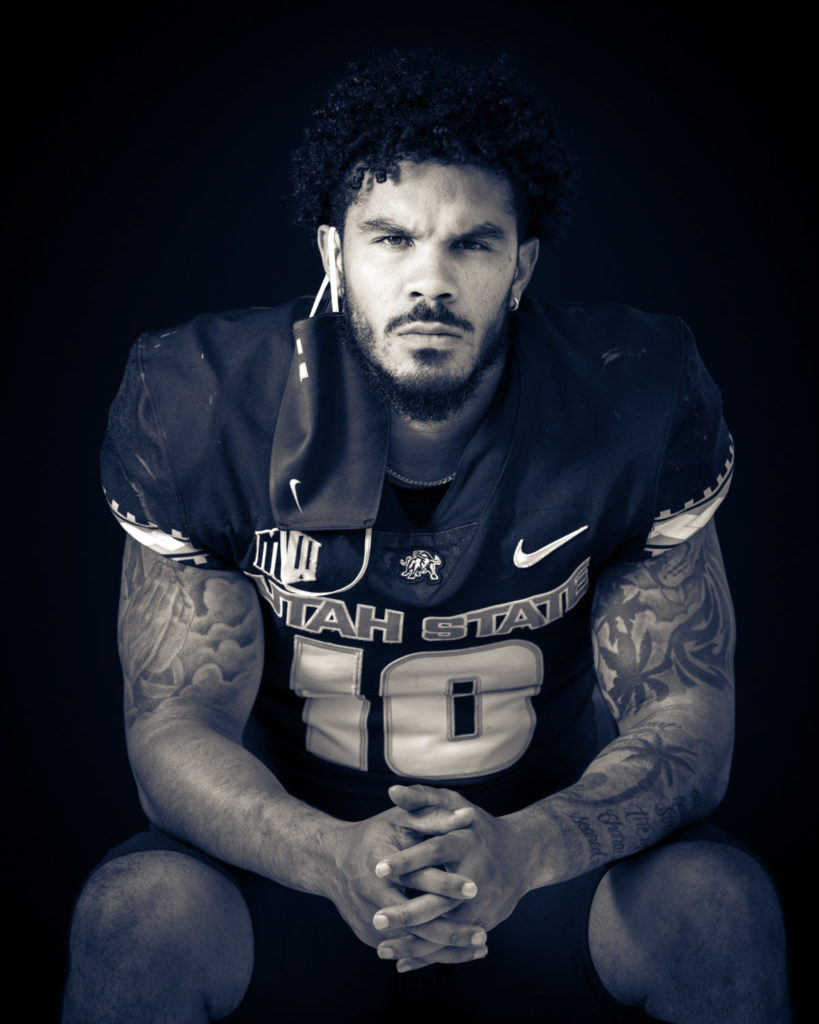
A senior wide receiver on the Utah State football team, Jordan Nathan was already tasked with rehabbing from off season shoulder surgery when the COVID-19 pandemic hit. Now, he tries to prepare for a 2020 season altered due to the surge of coronavirus cases over the summer. Photo by Levi Sim.
“I remember first hearing about the coronavirus a little while after my surgery, but I really didn’t think there was any way it was serious enough that they would cancel spring ball,” Nathan says. “But more and more outbreaks started happening, so soon our coaches told us we should just go home and take a little break, go home to our families and see if they need anything.”
The “break” ended up lasting about two-and-a-half months, which was particularly difficult for Nathan, who no longer had access to trainers and therapists as he tried to recover from his surgery. He had resistance bands sent to him and scraped up some dumbbells to work out in his mother’s garage while quarantining in Southern California.
Nathan, who graduated with a bachelor’s in sociology this spring, maintained contact with his coaches and teammates via text messages and Zoom meetings until Aggie football players were finally allowed to return to Logan on June 1. Coming from out of state, Nathan had to self quarantine in his apartment for two weeks before players started individual workouts on June 15.
He is concerned about the cancellation of spring practices and not being able to spend more time with his teammates because he feels the Aggies lacked a little “team chemistry and camaraderie” during their 7–5 season in 2019. But he feels they can overcome some of those deficiencies “if we focus on what’s in front of us and work our tails off.”
All that work could be for naught if the 2020 football season is canceled. But in June, Nathan was gearing up for the season opener against Washington State, despite knowing the potential for drastic alterations like a conference-only schedule or no fans in the stands.
“I would hate for things to get to that point because I love our fans. They help us stay alive and get back in games when things get tough, so not having them would be tough,” Nathan says. “But if it’s the difference of playing without fans or not playing at all, it’s my last season. I want to play.”






